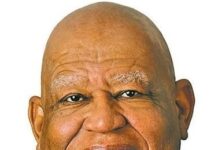 In a unique experiment, White students at Ohio State University were told they were participating in a study of student groups using funds from tuition payments. When students arrived for the study they were ushered into a waiting room. Background music was played softly in the waiting room. Students were left in the waiting room for seven minutes and they were not permitted to read or use any electronic devices. After the seven-minute waiting period, students were asked to fill out a survey asking them if they approved of funding particular student groups including those representing African Americans, Latinos, Arab Americans, and rural and agricultural studies, a group highly associated with White students.
In a unique experiment, White students at Ohio State University were told they were participating in a study of student groups using funds from tuition payments. When students arrived for the study they were ushered into a waiting room. Background music was played softly in the waiting room. Students were left in the waiting room for seven minutes and they were not permitted to read or use any electronic devices. After the seven-minute waiting period, students were asked to fill out a survey asking them if they approved of funding particular student groups including those representing African Americans, Latinos, Arab Americans, and rural and agricultural studies, a group highly associated with White students.
The results of the study showed that students who listened to Top 40 music performed by artists with a wide degree of diversity were likely to split the funding of the four student groups equally. Students who listened to mainstream white rock and roll bands allocated 35 percent of their funds to the agricultural studies group and split the remaining funds equally among the three ethnically oriented student groups. Students who listened to White Power rock bands, gave 40 percent of their money to the rural and agricultural studies group. A quarter of the funds went to the Latino student groups while the Black and Arab-American student groups got 15 percent of the money. The music played in the waiting room by White Power rock bands did not contain any lyrics relating to race or ethnicity.
Heather LaMarre, the lead author of the study which was conducted as part of her doctoral work at Ohio State, concluded, “This appears to be the first study that shows that music genre itself, not just the lyrics, has the potential to be a very powerful influence on people.” Dr. LaMarre is now an assistant professor of journalism and mass communication at the University of Minnesota.
The study was published in the March issue of the Journal of Broadcasting and Electronic Media.











I am not surprised at these findings!!
Not at all surprised by these findings. Music is one of the first areas of contention when high school bands have to decide for example, a drum section’s cadence. The straight 4/4 military march beat represents a culture and history. When it is changed and the beat shifts, everyone notices this and begin to associate the new sounds and rhythms with the people who are most familiar with it…and that means culture.